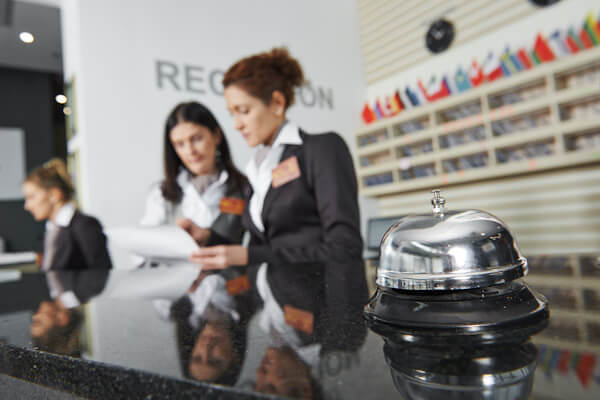Try These 6 A/B Tests Today to Increase Your Hotel’s Email Open Rates
In order to reach your guests with your hotel’s marketing emails, your email has to be opened. To drive revenue, the email must also entice your guests to click through to purchase.
The trouble is, today’s consumers get an overwhelming amount of email from brands. In fact, according to Return Path:
In order to reach your guests through the noise of brand communications, your hotel’s emails need to be relevant and enticing. This is a daunting task, because each guest is different, just as each hotel’s brand and value proposition may be unique.
A/B testing is one way to figure out what works (and what doesn’t) for your hotel’s specific population of guests. Here are six A/B tests you can try right now on your emails to help increase your open and click-through rates.
Test #1: Subject Lines
With the overwhelming amount of email that hits your guests’ inboxes daily, your subject line is often the one component standing between your email getting opened or deleted. Testing your subject lines will give you deeper insight into what makes your guests want to open your emails.
How to get started:
Begin testing out different variations of your subject line to see what clicks with your recipients. Here are a few tactics that have been known to engage readers and increase open rates:
- Shorten it to under 10 characters
- Turn it into a question
- Incorporate some humor, like a pun
- Keep it explicitly clear what they will receive by clicking
- Hint at an incentive
- Use the recipient’s name in the subject line
Test #2: The Sender
Before diving into the meat of your emails, take a look at who the sender is. Seeing a generic “ABC Hotel” or “noreply” as the sender may send up red flags with your subscribers that more than likely that email is SPAM or self-promotional.
Many people like connecting with people. By using the name and address of a real person on your team, you personalize an automated experience and humanize your brand.
Granted, many people make connections with specific brands, and like hearing from them. Keep in mind that this is something you can test, depending on your specific hotel and what your guests respond to.
How to get started:
Test a variety of sender names. Like HubSpot does below, keep some of your emails from the hotel, while others are sent from team members when appropriate:
You can also test if adding your hotel name alongside your team members will help get those emails opened. Here are a few variations you can try:
- James Bond
- James Bond, General Manager
- James from ABC Hotel
- James Bond, ABC Hotel
- James
Note: Your audience’s response to a name may take a few tests or variations to gauge (especially with other factors like subject line and message coming into play.) Make sure to give them multiple tries before counting one out.
Test #3: Delivery Time
Timing is everything. It’s vital to determining when your guests are most receptive to engaging with your email campaigns.
By A/B testing delivery times (including the date, day, hour, etc.) you’ll be able to send email campaigns at peak times, increasing open rates and click-throughs.
How to get started:
Look at a couple of campaigns that have gotten good engagement, and note the day, date, hour, etc. Based on that information, begin testing times you think your guests will be most active and receptive to the action prompted by your email.
You can also begin testing based off of research others have done and work from there. Here are some important findings that Kissmetrics learned about email timing:
- Subscribers are unlikely to open marketing emails during lunch (from noon to 2pm)
- Open rates are highest in the early morning (about 6 am)
- The best sending frequency is between 1 and 4 emails per month
Test #4: The Greeting
Your greeting sets the tone for the rest of the email. If your recipients find it offputting, it could potentially lead them to trash your email before reading anything more.
How to get started:
Test out different ways to say hello based on how your guests normally speak. Take a look at comments, Twitter feeds, or email correspondence to see how they typically communicate. You should also take your brand voice into consideration and think about how you can emulate your guests’ tone in conjunction with your brand voice. It will be more likely to resonate with them and probe action.
This is also a great time to test out personalization if you aren’t already doing so. When writing your greeting, try adding your guests’ names. Test it against a more formal greeting to gauge how your guests prefer to be addressed.
Test #5: Content Length
So people are opening your emails like they’re going out of style, but what happens if they aren’t clicking through?
One factor that could be playing a part in this problem is length. At some point or another, we’ve all gotten a really long email, and clicked delete about halfway through.
Sometimes the content isn’t relevant or interesting, and other times you just can’t afford the 20 minutes to get through it.
How to get started:
Test out how many words you really need to get your point across to your recipients. Do you really need 200 words or can you do it in 20? Write a draft, then think about whether you need those extra adjectives, and start paring your message down. You should aim to communicate in a clear, compelling, and concise way.
If your email still ends up being lengthy, try breaking up the text to make it easy to read. Use paragraphs, bullet points, and images, In fact, according to HubSpot, 65% of people prefer emails that contain mostly images versus mostly text.
Test #6: The CTA
First, let me ask you this. Are you even using a call-to-action in your emails? If you’re not, give it a shot! Think about what it is you want your guests to do with your emails and give them one clear way to do that with a large button.
Campaign Monitor found that by using a button-based CTA increased their click-through rate by 28% over a link-based CTA.
If you are using one, and it doesn’t really seem to be doing much, test variations of the button you are already using.
How to get started:
Specifically look at the aesthetics and copy of your button. Working together, these two aspects will create an effective CTA.
Examine the following parts of your button:
- Copy – It should be specific and actionable, encouraging the recipient to click through
- Size – Make it larger than your text to draw attention to it
- Design – Use shadows and other effects to make it “pop” off the page
- Color – Use a color different from that of the background and text to draw the eye to it
- Whitespace – Set it apart from the other elements in your email to create less distraction
Key Takeaway:
Keep in mind that this information is just a starting point to begin A/B testing emails.
Your guests are unique to you, your hotel, and your industry so the adage, “What works for one, may not work for another” rings very true.
That’s why it’s imperative you start and keep testing until you find what works best for your guest database.
Don’t get discouraged if you don’t hit email gold right away. It may take some time and multiple variations to find out what will help you increase your open and click-through rate results.
Want to learn more about the importance of email marketing in hospitality? CLICK HERE to read our free article, From Campaign To Content: The Evolution of Hotel Email Marketing.
Related Posts

Insights that drive results
Subscribe now to get the latest content
This site is protected by reCAPTCHA and the Google Privacy Policy and Terms of Service apply. *Required fields.






